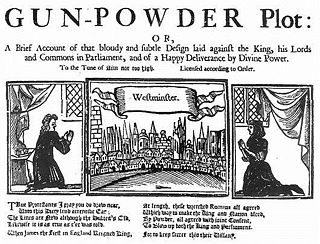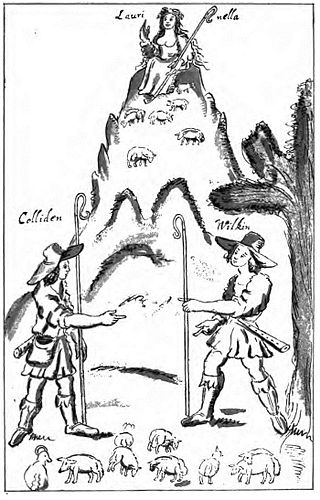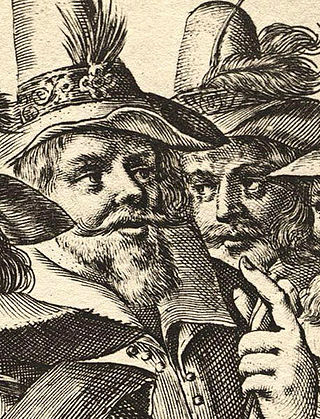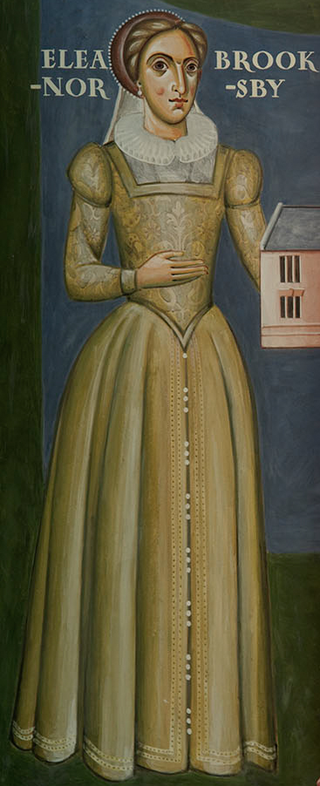Related Research Articles

Guy Fawkes, also known as Guido Fawkes while fighting for the Spanish, was a member of a group of provincial English Catholics involved in the failed Gunpowder Plot of 1605. He was born and educated in York; his father died when Fawkes was eight years old, after which his mother married a recusant Catholic.

The Gunpowder Plot of 1605, in earlier centuries often called the Gunpowder Treason Plot or the Jesuit Treason, was a failed assassination attempt against King James I by a group of English Catholics led by Robert Catesby who sought to restore the Catholic monarchy to England after decades of persecution against Catholics.

Robert Catesby was the leader of a group of English Catholics who planned the failed Gunpowder Plot of 1605.

Henry Garnet, sometimes Henry Garnett, was an English Jesuit priest executed for his complicity in the Gunpowder Plot of 1605. Born in Heanor, Derbyshire, he was educated in Nottingham and later at Winchester College before he moved to London in 1571 to work for a publisher. There he professed an interest in legal studies and in 1575, he travelled to the continent and joined the Society of Jesus. He was ordained in Rome some time around 1582.
Francis Tresham, eldest son of Thomas Tresham and Muriel Throckmorton, was a member of the group of English provincial Catholics who planned the failed Gunpowder Plot of 1605, a conspiracy to assassinate King James I of England.

William Parker, 13th Baron Morley, 4th Baron Monteagle, was an English peer, best known for his role in the discovery of the Gunpowder Plot. In 1605 Parker was due to attend the opening of Parliament. He was a member of the House of Lords as Lord Monteagle, the title on his mother's side. He received a letter; it appears that someone, presumably a fellow Catholic, was afraid he would be blown up. The so-called Monteagle letter survives in the National Archives, but its origin remains mysterious.

Sir Everard Digby was a member of the group of provincial English Catholics who planned the failed Gunpowder Plot of 1605. Although he was raised in a Protestant household, and married a Protestant, Digby and his wife were converted to Catholicism by the Jesuit priest John Gerard. In the autumn of 1605, he was part of a Catholic pilgrimage to the shrine of St Winefride's Well in Holywell. About this time, he met Robert Catesby, who planned to blow up the House of Lords with gunpowder, killing James I. Catesby then planned to incite a popular revolt, during which a Catholic monarch would be restored to the English throne.

William Basse (c.1583–1653?) was an English poet. A follower of Edmund Spenser, he is now remembered principally for an elegy on Shakespeare. He is also noted for his "Angler's song", which was written for Izaak Walton, who included it in The Compleat Angler.

Robert Abbot was an Anglican bishop, academic and polemical writer. He served as Master of Balliol College, Oxford, Regius Professor of Divinity, and Bishop of Salisbury from 1615. Among his four younger brothers, George became Archbishop of Canterbury and Maurice became Lord Mayor of London.

Dorothy Percy, Countess of Northumberland was the younger daughter of Walter Devereux, 1st Earl of Essex by Lettice Knollys, and the wife of Henry Percy, 9th Earl of Northumberland.
Henry Nevill, de facto 9th Baron Bergavenny was an English iron founder, soldier and politician who sat in the House of Commons at various times between 1601 and 1622 when he inherited the Baron Bergavenny peerage.

John (Jack) Wright, and Christopher (Kit) Wright, were members of the group of provincial English Catholics who planned the failed Gunpowder Plot of 1605, a conspiracy to assassinate King James I by blowing up the House of Lords. Their sister married another plotter, Thomas Percy. Educated at the same school in York, the Wrights had early links with Guy Fawkes, the man left in charge of the explosives stored in the undercroft beneath the House of Lords. As known recusants the brothers were on several occasions arrested for reasons of national security. Both were also members of the Earl of Essex's rebellion of 1601.

Eleanor Brooksby was an English noblewoman who, along with her sister Anne Vaux, supported Catholics in England during the 16th century by providing safe houses including Baddesley Clinton in Warwickshire and White Webbs in Enfield Chase near London for Jesuit missionaries such as Henry Garnett.

Edward Oldcorne alias Hall was an English Jesuit priest. He was known to people who knew of the Gunpowder Plot to destroy the Parliament of England and kill King James I; and although his involvement is unclear, he was caught up in the subsequent investigation. He is a Roman Catholic martyr, and was beatified in 1929.

Sir Robert Throckmorton, KG, of Coughton Court in Warwickshire, was a Member of Parliament and a distinguished English courtier. His public career was impeded by remaining a Roman Catholic.
Thomas Tasburgh, originally of South Elmham, Suffolk, afterwards of Hawridge and latterly of Beaconsfield and Twyford, Buckinghamshire, was a member of the English landed gentry, a magistrate, member of parliament, High Sheriff of Buckinghamshire, and officer of the Exchequer to Queen Elizabeth I.
Anne Vaux was a wealthy Catholic recusant.
Mary Thimelby was an English prioress of St Monica at Leuven.
Anne Neville born Mary Neville was an English Roman Catholic nun and royal debt collector who became the abbess of Pontoise near Paris.

Isabella Twysden was an English diarist. She lived at Royden Hall in East Peckham.
References
 This article incorporates text from a publication now in the public domain : "Wenman, Thomas (1596-1665)". Dictionary of National Biography . London: Smith, Elder & Co. 1885–1900.
This article incorporates text from a publication now in the public domain : "Wenman, Thomas (1596-1665)". Dictionary of National Biography . London: Smith, Elder & Co. 1885–1900.